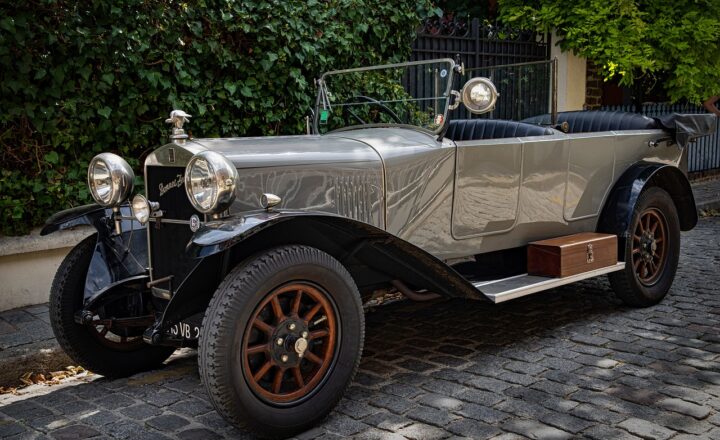The Secrets of Car Aerodynamics: How Engineers Design Vehicles to Cut Through Air
November 12, 2024

Aerodynamics is a critical factor in the design and performance of automobiles. As cars speed down the highway, they encounter air resistance, which can significantly impact their fuel efficiency, handling, and overall performance. Engineers invest substantial time and resources into understanding the principles of aerodynamics to create vehicles that not only look stylish but also glide seamlessly through the air. In this article, we delve into the secrets of car aerodynamics, exploring the principles, testing methods, and innovative designs that shape modern vehicles.
1. Understanding Aerodynamics: The Basics
Aerodynamics is the study of the behavior of air as it interacts with solid objects. In the context of automobiles, it refers to how air flows around the vehicle and the forces exerted on the car’s body as it moves through the air. Key aerodynamic forces affecting a car include:
- Drag: This is the resistance force that opposes a car’s motion. It increases with speed, making it crucial to minimize drag for fuel efficiency.
- Lift: Lift is the force that can increase the vehicle’s tendency to rise, affecting stability at high speeds. Engineers aim to achieve a balance to keep the vehicle grounded.
- Downforce: This force pushes the car downward, enhancing grip and stability, particularly in racing applications. More downforce can improve tire contact with the road but may also increase drag.
In design, engineers strive to reduce drag and increase downforce to optimize vehicle performance.
2. The Science of Airflow and Its Impact on Design
Understanding airflow is vital in designing cars that are aerodynamic. Elements such as shape, surface texture, and airflow manipulation all play a crucial role. The goal is to create a design that allows air to flow smoothly around the car, minimizing turbulence and drag.
2.1. Car Shapes and Their Aerodynamic Profiles
Vehicle shape greatly influences how airflow interacts with the car. The most aerodynamic shapes resemble teardrops, where the air has a smooth entry and exit, reducing drag. Designers analyze and refine various shapes, with three main types being commonly used:
- Sedans: These have a streamlined, elongated body that helps reduce drag. Features such as sloping roofs and smoothly integrated rear ends enhance aerodynamics.
- Coupes: More aggressive in styling, these vehicles often have a reduced front area and sharp rear profiles to maintain low drag while maximizing downforce.
- SUVs: Historically less aerodynamic due to boxy shapes, many modern SUVs are designed with rounded edges and contours for improved efficiency.
The battle between aesthetics and aerodynamics is ongoing, as manufacturers seek designs that are visually appealing while also being efficient.
3. Aerodynamic Testing: Simulating Real-World Conditions
To ensure designs perform optimally, car manufacturers conduct various aerodynamics tests. These typically involve wind tunnels and simulations that recreate airflow:
3.1. Wind Tunnel Testing
Wind tunnels allow engineers to replicate the conditions a vehicle will face on the road. Model cars are tested at different speeds to assess drag and lift:
- Flow visualization techniques, such as smoke or colored dyes, can show how air moves around the model, helping engineers identify areas creating excessive drag or turbulence.
- Data collected helps refine the shape and features of the vehicle during the design phase, ensuring that real-world performance aligns with test results.
3.2. Computational Fluid Dynamics (CFD)
CFD has revolutionized the way aerodynamics is studied. With powerful computing capabilities, engineers can simulate airflow over vehicle designs before physical models are created:
- CFD allows for detailed analysis of air pressure distribution and flow patterns around the car, enabling engineers to optimize designs with precision about drag reduction and airflow efficiency.
- This tool can save significant resources by identifying potential issues early in the design process, reducing the need for extensive physical testing.
Using both wind tunnel testing and CFD, engineers ensure that cars are designed to maximize their aerodynamic potential before they even hit the road.
4. Innovations in Aerodynamic Design
The quest for better aerodynamics has led to a slew of innovations in vehicle design, including:
4.1. Active Aerodynamics
Some modern cars feature active aerodynamic components that can adjust based on speed and driving conditions. Examples include:
- Deploying Spoilers: Rear spoilers can rise at higher speeds to boost downforce and retract at lower speeds to reduce drag.
- Adjustable Grilles: These can open or close to optimize airflow through the engine compartment while improving aerodynamic efficiency.
4.2. Advanced Materials
New materials, such as lightweight composites and low-friction coatings, help reduce drag. These innovations can lead to designs that maintain high strength while minimizing weight, enhancing both performance and efficiency:
- Using these materials in vehicle design can improve fuel economy as well as overall handling due to the balanced weight distribution.
The fusion of technology and design is driving forward the automotive industry’s ability to produce better, faster, and more efficient vehicles.
5. Real-World Impact of Aerodynamics on Performance
The influence of aerodynamics on a vehicle’s performance cannot be overstated. A well-designed, aerodynamic vehicle enhances:
- Fuel Efficiency: Better aerodynamic designs lead to lower drag, which can significantly improve miles per gallon (MPG), making cars more economical and environmentally friendly.
- Speed and Handling: Vehicles can achieve higher speeds without requiring excessive power due to reduced drag, and better downforce allows for improved cornering capabilities.
- Stability: Cars with high downforce provide better traction and stability, particularly at high speeds, enhancing overall safety and driving experience.
With the increase in global concern for fuel consumption and emissions, the role of aerodynamics is becoming even more critical in modern vehicle design. High-performing, efficient automobiles are a testament to the importance of aerodynamic engineering.
Conclusion
Car aerodynamics is a fascinating field that combines science and art. Engineers constantly strive to uncover the secrets of how to design vehicles that can cut through the air with minimal resistance while ensuring high performance and efficiency. Through innovative design, advanced testing techniques, and a deep understanding of airflow, the automotive industry continues to evolve, leading to greener, faster, and more efficient vehicles that meet the demands of the 21st century.
As you consider your next automobile, remember that behind every sleek design lies an intricate web of engineering that enables the vehicle to perform at its best. The future of car design is undeniably tied to the secrets of aerodynamics, blending aesthetics with functionality to create the next generation of vehicles.





